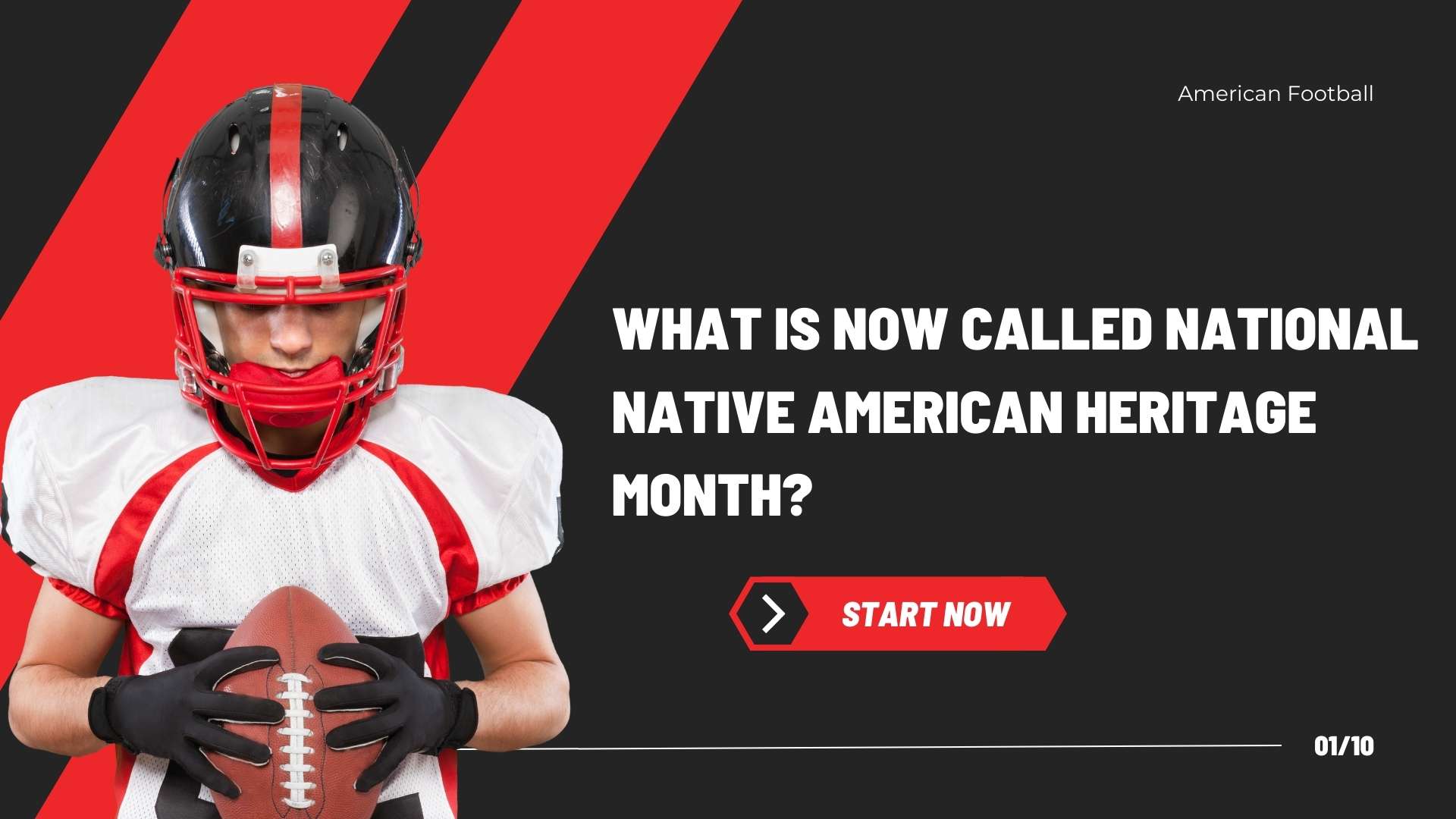The president who initiated what we now celebrate as National Native American Heritage Month is George H. W. Bush. In 1990, he signed a joint resolution to honor Native American culture and heritage.
National Native American Heritage Month celebrates the rich history and traditions of Native Americans. This observance highlights their contributions to society. It serves as an opportunity for everyone to learn more about Native American cultures. By celebrating this month, we acknowledge the importance of these cultures in the American narrative.
Stay with us as we explore more about the origins and significance of this special observance. We will delve into its history and the impact of the proclamation. Join us in appreciating and understanding the heritage of Native Americans.
Origins Of Native American Heritage Month
The rich and diverse cultures of Native Americans deserve recognition. This led to the creation of what is now known as National Native American Heritage Month. This observance honors the history, culture, and contributions of Native American peoples. But when did it all start?
Early Proposals
Efforts to recognize Native American contributions began in the early 20th century. Dr. Arthur C. Parker, a Seneca Indian and director of the Museum of Arts and Science in Rochester, New York, was one of the first to advocate for a day dedicated to Native Americans. He convinced the Boy Scouts of America to set aside a day for the “First Americans,” which eventually became a week-long observance.
In 1915, the annual Congress of the American Indian Association formally approved a plan concerning American Indian Day. The association’s president, Reverend Sherman Coolidge, issued a proclamation declaring the second Saturday of each May as American Indian Day. This proclamation also contained the first formal appeal for recognition of Indians as citizens.
Initial Observances
Several states took note and began to observe a day to honor Native Americans. In 1916, New York became the first state to declare an “American Indian Day.” Other states followed suit but celebrated on different days.
In 1976, the United States celebrated its bicentennial. This landmark anniversary brought attention to the contributions of all citizens, including Native Americans. This led to the establishment of Native American Awareness Week. Presidents Gerald Ford, Jimmy Carter, and Ronald Reagan issued proclamations for the week.
In 1990, President George H.W. Bush approved a joint resolution designating November as “National American Indian Heritage Month.” The bill read in part that the President is authorized and requested to issue a proclamation calling upon federal, state, and local governments, groups, and organizations and the people of the United States to observe such month with appropriate programs, ceremonies, and activities.
Today, National Native American Heritage Month is a time to celebrate and honor the unique cultures, traditions, and histories of Native people. It is also an opportunity to educate the general public about tribes, raise awareness about the challenges Native people have faced both historically and in the present, and the ways in which tribal citizens have worked to conquer these challenges.
The President Who Initiated The Month
National Native American Heritage Month celebrates the rich cultures, histories, and contributions of Native American people. But who started this important month? The honor goes to President George H. W. Bush. In 1990, he signed a resolution that designated November as National American Indian Heritage Month. This decision marked a significant step in recognizing and honoring Native American heritage.
Key Decision And Announcement
On August 3, 1990, President Bush made a key decision. He signed a joint resolution into law, officially declaring November as National American Indian Heritage Month. This resolution acknowledged the importance of Native American culture and history. It aimed to educate the public and celebrate the contributions of Native Americans to society.
Political And Cultural Context
The late 1980s and early 1990s were a time of growing awareness. There was a need to recognize the contributions of diverse groups in the United States. The political climate was ripe for change. Many groups and activists pushed for greater acknowledgment of Native American history.
Before 1990, there were attempts to recognize Native American contributions. Native American Awareness Week was celebrated in the 1980s. These efforts paved the way for a more extended celebration. President Bush’s decision reflected the changing attitudes of the time.
President Bush’s announcement came at a crucial time. It aligned with broader efforts to promote cultural diversity and inclusion. This move was also a response to the advocacy of Native American leaders and organizations. They had long called for a month dedicated to celebrating their heritage.
Evolution Of The Celebration
The journey towards what is now known as National Native American Heritage Month began many years ago. This celebration honors the rich cultures, histories, and contributions of Native Americans. It has grown over the years, gaining recognition and expanding its reach.
Expansion And Recognition
In 1990, President George H. W. Bush signed a joint resolution designating November as National American Indian Heritage Month. This was the first step in recognizing the importance of Native American heritage on a national level.
Over the following years, the observance evolved. It expanded to include the diverse cultures of various Native American tribes. Schools, museums, and community centers began to host events and educational programs. These activities aimed to educate the public and celebrate Native American traditions.
Modern Observances
Today, National Native American Heritage Month is widely observed across the United States. Government agencies, educational institutions, and community organizations participate in this celebration. They host a variety of events, including:
- Cultural exhibitions showcasing Native American art and artifacts
- Storytelling sessions with Native American elders
- Workshops and lectures on Native American history and contributions
These events help raise awareness and appreciation for the rich cultural heritage of Native Americans. Social media campaigns also play a significant role in spreading information and engaging a broader audience.
Impact On Native American Communities
National Native American Heritage Month has a profound impact on Native American communities. This month-long celebration increases awareness and appreciation of Native American cultures. It also highlights their significant contributions to society.
Cultural Preservation
During National Native American Heritage Month, efforts to preserve Native American culture intensify. Cultural preservation is crucial for maintaining traditions and customs. Events showcase traditional dances, music, and storytelling.
These activities help keep ancient practices alive for future generations. Many tribes participate in these events, sharing their unique heritage with the wider community.
Educational Programs
National Native American Heritage Month brings various educational programs to the forefront. Schools and universities often host workshops and lectures. These programs educate people about Native American history and contributions.
Some common educational activities include:
- Guest speakers from Native American communities
- Documentary screenings
- Interactive exhibits
- Art and craft workshops
These initiatives provide valuable knowledge and promote understanding. They also inspire respect for Native American cultures and achievements.
| Event | Description |
| Storytelling Sessions | Traditional stories shared by elders |
| Craft Workshops | Hands-on activities to learn traditional crafts |
| Documentary Screenings | Films highlighting Native American history |
These events and programs play a vital role in fostering a deeper understanding of Native American heritage. They ensure that the rich history and culture of Native American communities are celebrated and preserved for future generations.
Legacy Of The Presidential Proclamation
The legacy of the Presidential Proclamation establishing National Native American Heritage Month remains significant. President George H.W. Bush first recognized this month-long celebration in 1990. The proclamation aimed to honor the rich culture, traditions, and contributions of Native American communities. This historical move created a lasting impact on national awareness and recognition of Native American heritage.
Long-term Effects
The Presidential Proclamation led to increased visibility for Native American issues. Educational institutions began incorporating more Native American history into their curricula. This helped students learn about the diverse cultures and histories of Native American tribes. Many organizations started hosting events to celebrate and educate people on Native American heritage.
Public awareness grew, leading to a deeper appreciation for Native American contributions. The proclamation also encouraged museums and cultural centers to showcase Native American art and history. This created more opportunities for people to engage with and understand Native American culture. The month-long celebration fostered a sense of pride within Native American communities.
Continued Advocacy
Advocacy for Native American rights continues to grow. Many groups use National Native American Heritage Month to highlight ongoing issues. These issues include land rights, education, and healthcare. The month serves as a platform for raising awareness and pushing for change.
Community leaders and activists work tirelessly to address these challenges. They use this time to educate the public and advocate for policy changes. The legacy of the Presidential Proclamation lives on through these efforts. Each year, the celebration renews focus on both the achievements and struggles of Native American communities.
National Native American Heritage Month remains a vital part of American culture. It ensures that the history and contributions of Native Americans are not forgotten. The proclamation’s legacy continues to inspire and drive advocacy for Native American rights.
Frequently Asked Questions
Who Started National Native American Heritage Month?
President George H. W. Bush proclaimed November as National Native American Heritage Month in 1990.
Why Was National Native American Heritage Month Created?
It honors Native American history, culture, and contributions. It aims to increase awareness and understanding.
When Is National Native American Heritage Month Celebrated?
It is celebrated every November. It recognizes and celebrates Native American heritage and achievements.
Conclusion
National Native American Heritage Month began with President George H. W. Bush. He proclaimed November 1990 as “National American Indian Heritage Month. ” This was a significant step towards recognizing Native American contributions. Each year since, we honor their culture and history.
Celebrations include educational programs, traditional music, and storytelling. Understanding this month’s origins helps us appreciate its importance. Let’s continue to respect and learn from Native American heritage.



Leave a Reply